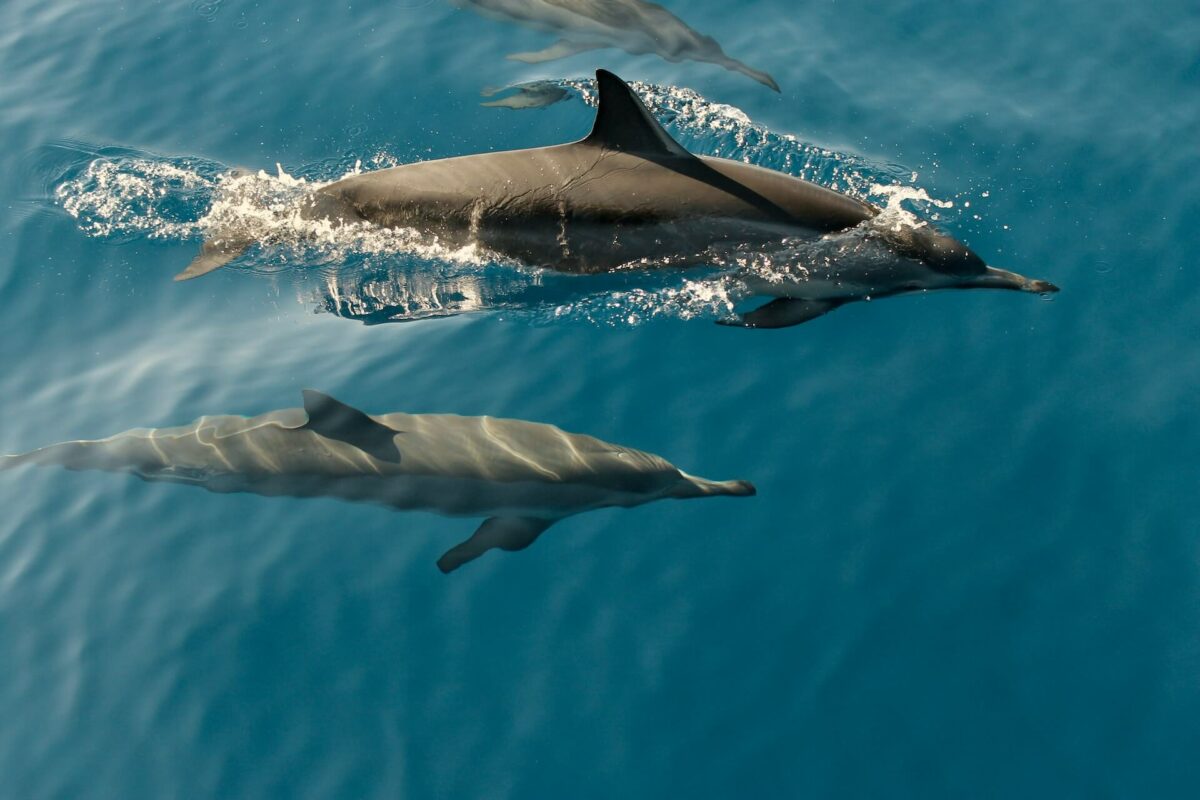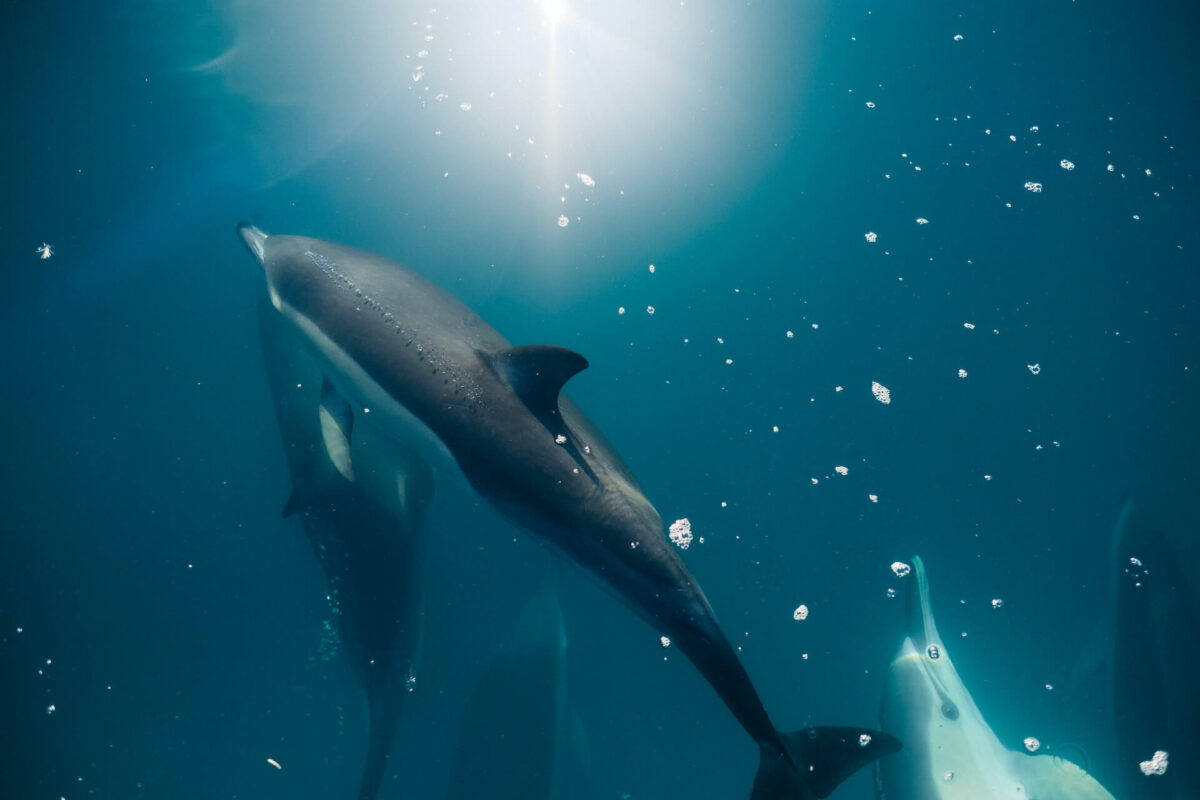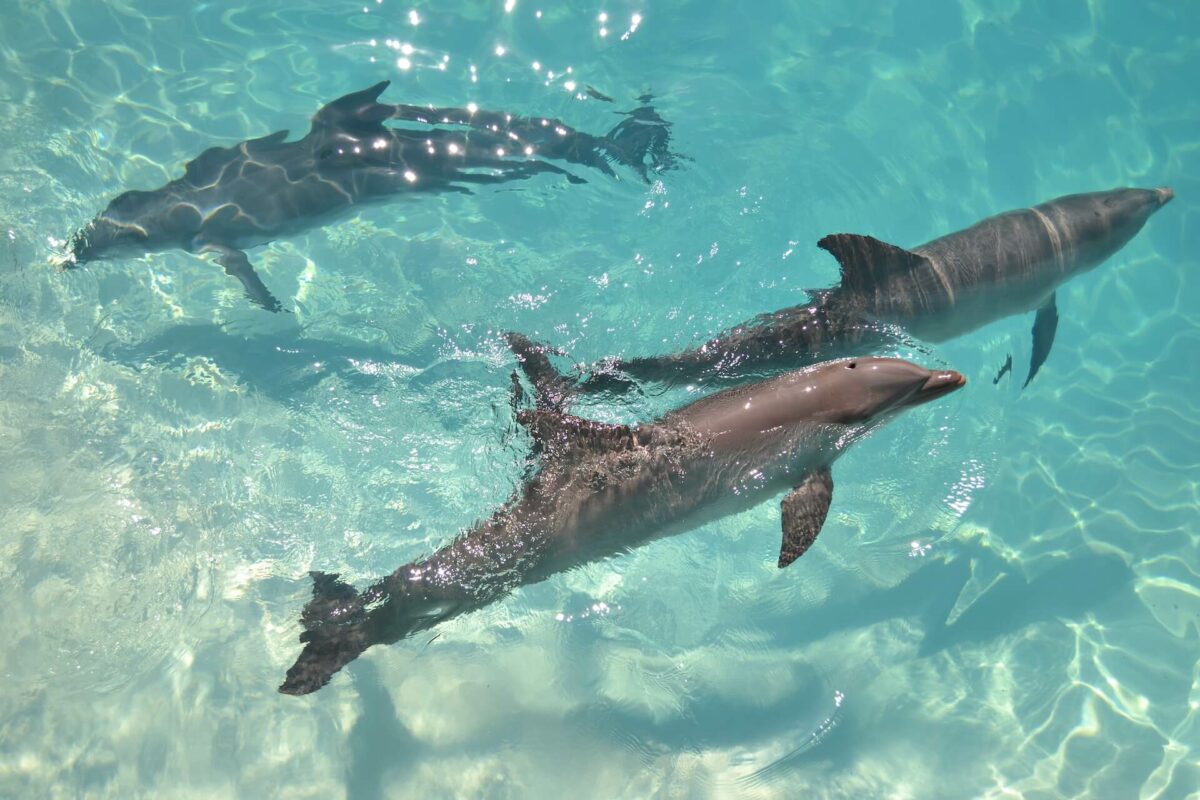Dolphins are widely regarded as some of the most intelligent animals on earth, from being excellent problem-solvers to using tools for hunting, they’ve got some truly jaw-dropping cognitive abilities.
Oftentimes, these aquatic acrobats live in groups or pods that consist of typically between 5 and 20 individuals, but some pods can be much larger, sometimes multiple hundreds of dolphins strong.
Whilst dolphins have numerous abilities that are fascinating to humans, today we’re going to talk about their reproduction process and cover some basics.
One question that often comes up when discussing dolphins is how they actually give birth and do dolphins lay eggs?
If you’ve ever found yourself pondering upon this question, don’t worry you’re in the right place.
Do Dolphins Lay Eggs?
No, dolphins do not lay eggs. Dolphins are marine mammals that like all mammals, give birth to live young.
Mother dolphins carry and develop the fetus in their womb for a gestation period of between 10 and 12 months depending on the species.
Once the calf is ready to be born, it’s usually born tail first to minimize the risk of drowning.

Mom will help the newborn by pushing it up to the surface until it learns how to breathe through its blowhole.
Instinct kicks in almost immediately and the calf is very quickly able to breathe and swim on its own.
It’s also worth noting that dolphins almost always give birth to a single calf, they virtually never have twins.
Why Don’t Dolphins Lay Eggs?
Dolphins don’t lay eggs because they are marine mammals that have evolved over millions of years to give birth to live young instead.
Giving birth to live young is a trait of all mammals, this is because the internal development of the fetus allows for more complex development that wouldn’t be possible in an egg.
It’s also a way that the mother can protect her calf by keeping it safe in her womb until the youngster is big enough to be born.
There are many predators in the ocean that gobble up fish eggs, turtle eggs, and more, so giving live birth offers a form of protection that eggs don’t.
Mothers can protect their calves from heat, cold, moisture, and predators, which is something that’s not possible for animals that lay eggs.
Egg-laying species have the incredibly difficult task of maintaining the right temperature for the egg over long periods as well as protecting the egg from predators.
It’s a difficult task that makes the birth rate much lower in these animals.
In some animals that lay eggs, the egg contains all of the nutrients needed for the fetus to develop before it hatches.
Whereas mammalian fetuses are sustained by the mother’s placenta, which provides nutrients, oxygen, and removes waste.
The mother has control over how much food she provides her fetus, so if the youngster needs more she can provide it.
How Does A Dolphin Give Birth?
The birthing process for dolphins is similar to all mammals, but it begins with a male and a female mating during the breeding season.
The male enters his retractable penis into the female’s vagina and ejaculates, which then begins the journey of his sperm meeting the female’s egg.
Once the egg is fertilized, the mother goes through a gestation period of between 10 and 12 months depending on the dolphin species.

During this time, the mother can control how much food it’s providing its young as well as keep it protected from the elements and predators.
When the calf is big enough and ready to be born, Mom will give birth to a single calf that is born tail first to prevent drowning.
The calf is born and is already between 39 and 53 inches long, with its eyes wide open and able to swim and breathe almost immediately.
The mother will swim by the calf, using her flippers and fins as support to guide the calf through the ocean.
Most dolphins nurse from their mothers for between two and three years, but some individuals have been documented nursing from their mothers for up to ten years.
Dolphin milk is extremely rich in nutrients and fat, which allows the baby to grow incredibly fast.
Calves will stay by their mom’s side usually for between three and six years whilst they learn how to hunt, avoid danger, and navigate the territory.
How Do Dolphins Reproduce?
Dolphins reproduce sexually, with males fertilizing the eggs of females internally which typically happens during the breeding season.
Male dolphins can be particularly aggressive and coercive during the breeding season, even forcing females to have sex with them.
Breeding season usually takes place during the warmer months of the year, with males battling it out to gain access to females.
Once the male has successfully courted a female, he will mate with her, and the fertilized eggs will develop inside her body.

After the gestation period is complete, the birthing process begins which as discussed above involves a single calf being born and nursed by its mother for a few years.
Calves typically stay with their mothers through their teenage years until they have the skills needed to take on the ocean by themselves.
Once ready, they will head out on their own journey, sometimes finding a pod to live with for protection and comfort.
Dolphins are highly intelligent animals that enjoy being part of a pod, they learn, protect, and develop one another and have very complex social structures.
Wrapping Up
To summarize, no, dolphins do not lay eggs. Dolphins are mammals that give birth to live young once every one to six years.
As mammals, mothers nourish and protect their calves internally before they are ready to be born.
At this point, the calf is born tail-first and supported by its mother, but it can already open its eyes, swim, and breathe only minutes after being born.
Dolphin reproduction is fascinating, but it’s clear that giving live birth works much better for these animals than laying eggs.
Thanks for taking the time to read this post and learn more about dolphins and how they give birth today.
See you in the next one!

Hi, I’m George – the founder of MarinePatch. I created this blog as marine wildlife has been my passion for many years. I’ve spent over a decade in the marine wildlife industry and spent years out in the field conducting research. In today’s modern world, an online blog is the best place for me to share my findings and reach as many people as possible to help educate and inspire others. Enjoy your time here and you’re welcome back anytime!

